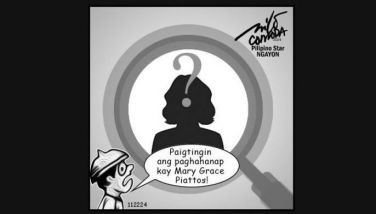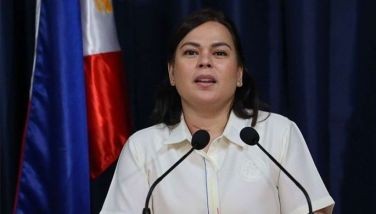Public medical health care is wanting
In advanced and highly developed countries, the life-saving issue on the health care services of their inhabitants, together with covering health and medical insurance, has become a top priority and concern of the State and its government.
In fact, among their high-level companies or private corporations, the factors of employment, personnel retention, and retirement include health and medical care components in the package of benefits. They cover complete services for the working force and their families, during their employment and in work places and after retirement, actuarial and insurance coverage, and even such fringe freebies on medical and health tourism.
Not so much for the rich "can afford", and those with health care plans. It's the poor on hand-to-mouth existence who suffer when sick, and alas, die in haste without the ministrations of competent medical experts and pricey medicine. Government statistics show about 70 percent of Filipinos dying untreated in the countryside and in urban slums for lack of doctors and free health care facilities.
Former Health Secretary Jaime Galvez-Tan laments that doctor shortage is a worsening problem, citing 21 towns and 7 government hospitals in Western Samar, 5 towns in Sulu, and a total of 120 towns nationwide, are without rural health doctors. And the number is increasing as it takes years to fill up the lengthening vacancy.
DOH current stats also reveal that the number of RP doctors staying put to practice medicine is gradually dropping. Secretary Duque decries that on the average 1,000 doctors every year leave for greener pasture abroad, like an exodus shifting to a nursing career abroad.
In the last medical board exams, 1,513 new physicians made it, but most would eke out abroad for better opportunities. The few that remain are pursuing specialization and sub-specialization, later as Diplomates and Fellows. Only a trickle may have the "missionary" zeal of sacrificial service in the rural health care among the sickly poor in the lonely outbacks.
Here's another shocker… Dr. Tan likewise put in that while some few years ago, there used to be some eager thousands of medical students with lofty dreams to take the Hippocrates oath someday as lifelong career, now their number is down to 1,500 only. How many will remain by graduation time, say, 2010 or 2012?
Meantime, for this year's BAR exams starting September 7 last, there are 6,533 lawyer wannabes. Many will surely flunk, say, some 80% based on past BAR results, and only about 1,300 new lawyers get blest. The common joke is that the country is now still over-populated with lawyers, but short of doctors.
It's neither surprising nor providential that the patronage and preference of the sickly poor to herbal concoctions that are passed on as effective medicine via promotional gimmicks have gained foothold and popularity. The high cost of medical and scientific treatment, and the shortage of doctors in the rural areas and urban slums where the impoverished crowd one another, make the cure beyond their reach.
Despite the much anticipated and over-rated cheaper and quality medicine act (RA 9052), there's no marked impact in bringing the prices of medicine much cheaper. Hence, even the across-the-counter drugs are still hard to come by for the poor who depend on the "botika ng bayan", because whatever little cash is even not enough for their very meager food.
By the way, where's that promise of the Philippine International Trading Corp. (PITC) that with the amended generics law, even the "branded" medicines would become cheaper because the PITC will "intervene" by directly buying the branded ones direct from source, like India and Israel, and for PITC to make them available much cheaper? So far, PITC has reneged - as before - on its commitment to bring down the prices of medicine, including the branded ones. "Asa ka'g bring down"?
* * *
Email: [email protected]
- Latest
- Trending





























